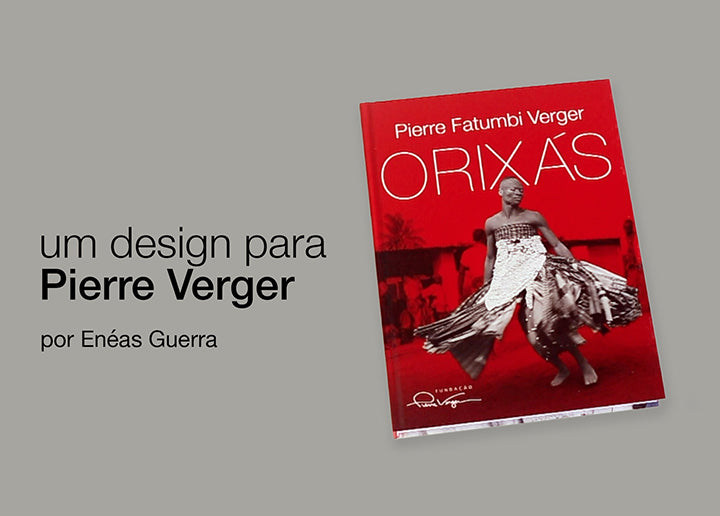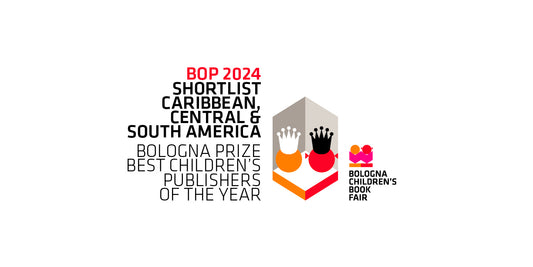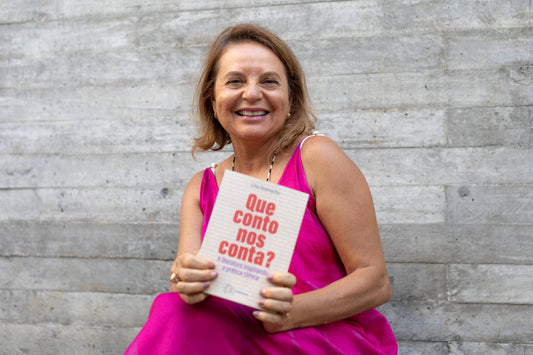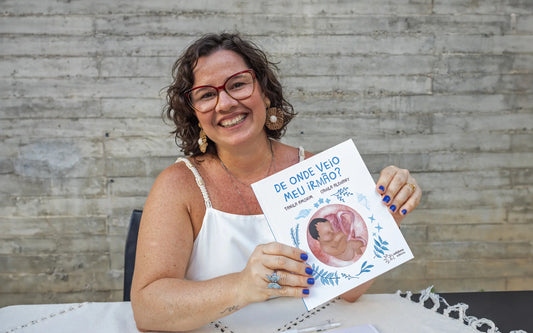Experience in the graphic conception and design of the book Orixás by Pierre Verger. Both in the first edition in 1981 and in the new edition of this singular work.
A design for Verger - Text by Enéas Guerra
I have great memories of the time I spent time with Pierre Verger during the art editions I made of several of his books. The first memory of a work I carried out with the photographic work of Pierre Verger was the design of a poster for an exhibition of his in Salvador in 1976.
After this date, at the end of the 1970s , Verger, with several books published abroad and living for many years in Bahia, remained almost unknown in Brazil. His photos about Brazil had only been published in the magazine O Cruzeiro at the end of the 40s and beginning of the 50s, with texts by Bahian journalist Odorico Tavares and other professionals, in addition to the few texts in Portuguese available . you can see.
Excited to publish books by Pierre Verger in Brazil for the first time, Arlete Soares, Maria Aparecida da N ó brega , Arnaldo Grebler and I created the publishing house Corrupio in 1980, celebrating our achievement with the publication of the book Retratos da Bahia − 1946 to 1952 .
Later, when we began the editorial project for the book Orixás , in 1981 , Verger showed contagious enthusiasm. During work, we spent hours and hours, days and days dedicated to planning the edition . Pierre Verger had in mind everything he wanted for his work to be inserted into the graphic context of a book, from the sequence of chapters and their corresponding photos, to the visual concept of the book, the elaboration that of pagination , the mise en page , as he said.
From reading the originals and my understanding of the content , knowing what Verger wanted, we began the graphic conception and design of Orixás . I opted for a comfortable book format , with the definition of the cropping of the photos on the page , and the choice of the most appropriate typography for the general text of the chapters , their notes and captions for the photos , in addition to careful attention to the accentuation in Yoruba words .
I remember that, as the edition progressed , on certain days, Verger and I met to show, evaluate and discuss what had been prepared, and these were pleasant working meetings . He showed satisfaction with the new ideas about design and expressed admiration , with expressions of his own in his characteristic accent . The working environment with Verger was always light and happy, he always accepted suggestions with respect and willingly . I remember, for example, two moments, such as the one in the “Initiation” chapter , in front of the image that shows a delicate gesture of conduction by an initiate , I proposed that on the opposite page there would be a detail magnified of that gesture, even if it was captured from another photo that Verger took following that moment of affection. In chapter five , “ Ogum ” , I created two illustrations with the traces of the ritual trajectories and noted the title “ Gods ” , in the second illustration , instead of “ Orixás ” as it was in the sketch made by Carybé . When showing Verger the illustrations , he asked to keep the title “ Gods ” , which he liked more.
It is also important to note that at the same time as the conception of the book Orixás , two other books were created and produced, Oxossi, o ca çador and Lendas dos Orixás , both published by Corrupio in 1981.
Anyone who didn't live through the era of artisanal graphic production has no idea how laborious it was to produce a book, especially when it included images, photographs, illustrations and engravings . The first edition of the book Orixás was made with the composition of the text in linotype, which, in a simple definition , was a machine with a keyboard whose raw material was melted lead and cast into a matrix for printing on paper . The proofs of text composition were pasted onto artwork on cardboard paper , on the corresponding original pages , to produce an acetate film called photolith, the recording matrix for the printing plates . .
The process today is easier. In this new edition we have included some graphic interventions , proposing to improve reading comfort. The quality of the photos was possible to successfully elaborate thanks to the treatment given to Verger's original negatives in the restoration and digitization laboratory of the Pierre Verger Foundation and the full black printing , one tritone, two tones in black and one in gray, with the use of new graphic production technologies . It is with great satisfaction that we see Verger's valuable collection being extremely well cared for and preserved by dedicated people committed to doing the best for the Pierre Verger Foundation.
This new editorial project for the book Orixás that we are now carrying out has valuable meanings for me: firstly, due to the decision to keep the current proposal closer to the original, conceived by Verger . And, second, for my participation in the art edition, thirty-seven years after the first edition of the book, a work that will continue to make history in Afro-Brazilian culture.
After all, what most marked my memory , after these past years, was the immense pleasure of having spoken with Pierre Fatumbi Verger, both in developing the design of his books and, above all, in living with a being special human, kind, devoid of material goods, affectionate and generous with the simplest people. Verger had a passionate dedication to his work, and had a subtle and refined humor. Whenever we worked at his house, he elegantly always offered “ a bad tea or a bad coffee ”, as he used to say.
Eneas Guerra
Designer, editor and illustrator
Member of the Board of Trustees of the Pierre Verger Foundation
Text originally published in the new edition of the book Orixás by Pierre Verger






